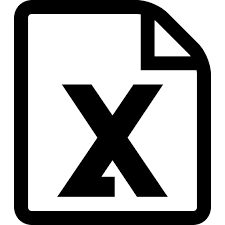We have recently upgraded the eMARS website in November 2020. For information on the upgrade, and how to enter the site, go to the "eMARS Updates" page listed on the eMARS Menu.
The eMARS database is a lessons learned database in accordance with the purpose stated in the Seveso Directive (2012/18/EU). To preserve its nature as an objective source of lessons learned information, and maintain the willingness of authorities and operators to provide an honest and detailed account of what really happened, in order to prevent future similar incidents, the identifying information of the name of the sites and the location of the incidents in the database is not publicly disclosed.
About eMARS - The purpose of the database - Analysing eMARS data - Links to other chemical accident report sites
About eMARS
The Major Accident Reporting System (MARS and later renamed eMARS after going online) was first established by the EU’s Seveso Directive 82/501/EEC in 1982 and has remained in place with subsequent revision to the Seveso Directive in effect today. The purpose of the eMARS is to facilitate exchange of lessons learned from accidents and near misses involving dangerous substances in order to improve chemical accident prevention and mitigation of potential consequences.
eMARS contains reports of chemical accidents and near misses provided to the Major Accident Hazards Bureau (MAHB) of the European Commission’s Joint Research Centre (JRC) from EU, EEA, OECD, and UNECE countries (under the TEIA Convention). Reporting an event into eMARS is compulsory for EU Member States when a Seveso establishment is involved and the event meets the criteria of a “major”accident” as defined by Annex VI of the Seveso III Directive (201218/EU). For non-EU OECD and UNECE countries, reporting accidents to the eMARS database is voluntary. The information of the reported event is entered into eMARS directly by the official reporting authority of the country in which the event occurred.
The purpose of the database
Chemical accident reports from investigations can be powerful in raising awareness of potential failures that could cause major accidents in establishments using dangerous substances. They also provide the general public with access to accident information to aid local and national efforts to reduce chemical accident risks.
Reports in eMARS are not intended to serve as instruments for passing judgement on individual companies or countries associated with an accident. A blame culture surrounding the database would greatly reduce the sharing of information. Hence, confidential information like companies names and locations are not identified in the database in order to maintain focus on the lessons learned value of the information and to encourage complete and accurate reporting of what happened so that everyone can learn from it.
Analysing eMARS data
eMARS Statistics Dashboard. Click-on the "Statistics" icon above (or the subtitle to the left) for real time snapshots of eMARS statistics on number of accident reports by year, Seveso site classification, industry type, and involving special circumstances (i.e., involvement of contractors or domino effects, Natech events or transboundary impacts).
Custom User Analysis. It is possible for any public user to query the database using the Search functionalities to filter out specific accident records and download the results in an Excel file (click on the  in the lower right-hand side of the Search page). When analysing the data, users should keep in mind that the data and reporting system have evolved over the years, and that information in reports varies considerably in detail and type of information depending on the user reporting the information and the detail included in the investigation report.
in the lower right-hand side of the Search page). When analysing the data, users should keep in mind that the data and reporting system have evolved over the years, and that information in reports varies considerably in detail and type of information depending on the user reporting the information and the detail included in the investigation report.
Data analysis should also take into account the following conditions:
- As noted above, reports do not identify the location or company names of the accident site in order to avoid use of the database for criticizing country or company performance or use of the information in legal processes. This is standard practice for lessons learned databases where anonymity helps to encourage sharing of information and discourages an inappropriate use of lessons learned information to incriminate and punish the sources of these valuable data.
- eMARS annual statistics are not reliable for the final three years of data. On average, it takes about three years for the reporting process to be completed, following investigation, internal review and translation processes. Many reports are therefore not available online until 2 -3 years following the accidents, If there is substantial legal activity around the accident, the delay in publishing a report can be much longer than 3 years.
- Prior to the Seveso II Directive, the classifications “upper tier” and “lower tier” did not exist. After Seveso II was established, sites could not be definitively classified until the early 2000s. Sites outside EU countries do not have Seveso classifications.
- “Near misses" on EU sites are events that do not qualify as major accidents under Seveso.
"Other Events” are usually accidents in transport or may be accidents reported by non-EU OECD countries.
-
The feedback provided over timer by its users to MAHB as well as the lessons learned by MAHB researchers have generated inputs that can improve the efficiency and effectiveness of the system. The eMARS database is maintained and regularly updated by the Major Accident Hazards Bureau (MAHB), with translation of accidents into English provided by the European Commission's POETRY service since 2011.
For questions or to provide feedback on the eMARS reporting system, please contact:
Links to other chemical accident report sites

